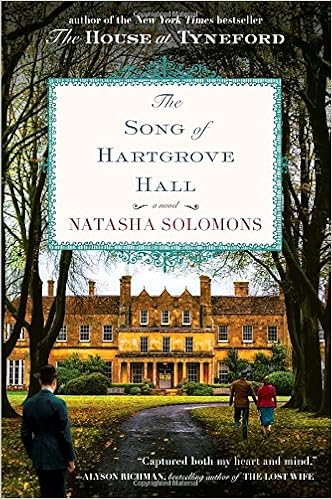 Harry Fox-Talbot is the youngest of three young brothers from Hartgrove Hall, a grand but crumbling country house in the beautiful Dorset countryside once painted by Constable. His story is told in alternating time periods. The early part begins in 1946, as the brothers return from World War II and come home for the first time in seven years. The late part runs from 2000 to 2003.
Harry Fox-Talbot is the youngest of three young brothers from Hartgrove Hall, a grand but crumbling country house in the beautiful Dorset countryside once painted by Constable. His story is told in alternating time periods. The early part begins in 1946, as the brothers return from World War II and come home for the first time in seven years. The late part runs from 2000 to 2003.The full life of a musician and his love for his wife, Edie, are told in the 50+ years of the story. When we begin, it’s 2000 and Edie has died, leaving Harry bereft. (Quirkily, Harry is called “Fox” by even his brothers, who are also Fox-Talbots, of course.) Solomons describes Fox’s feelings so well: “. . . the bric-a-brac moments that make up a shared life. The grand events . . . shine a little brighter, but they are only a tiny proportion of one’s life together; a handful of stars in the night’s sky. It was the mundane, frankly dull things I missed the most. I missed not talking to her over breakfast. We’d ignored one another over toast and morning coffee with great pleasure for nearly fifty years.”
 |
| Constable's Dedham Lock and Mill |
The three-year story after Edie’s death tells of how Fox makes a surprising connection with his four-year-old grandson, when they discover together that the boy has a gift for the piano. This nudges Fox back into life and contacts with his family and his old colleagues, with all the bittersweetness of memory and regret.
 |
| Natasha Solomons |
The publicity for the novel notes that it’s from the author of the bestseller The House at Tyneford. I can see why the publisher would do that, since that’s Solomons’s most successful book, but I really don’t think this is much like the Tyneford novel. To me, it’s much closer to my favorite Solomons novel, Mr. Rosenblum Dreams in English, another love letter to England and Englishness, with all the flaws and oddities.
Note: I received a free advance reviewing copy of The Song of Hartgrove Hall from the publisher, through Amazon's Vine program. Versions of this review may appear on Amazon, Goodreads, BookLikes and other reviewing sites, under my usernames there.
Image sources: Amazon.com, commons.wikimedia.org, natashasolomons.com.
No comments:
Post a Comment